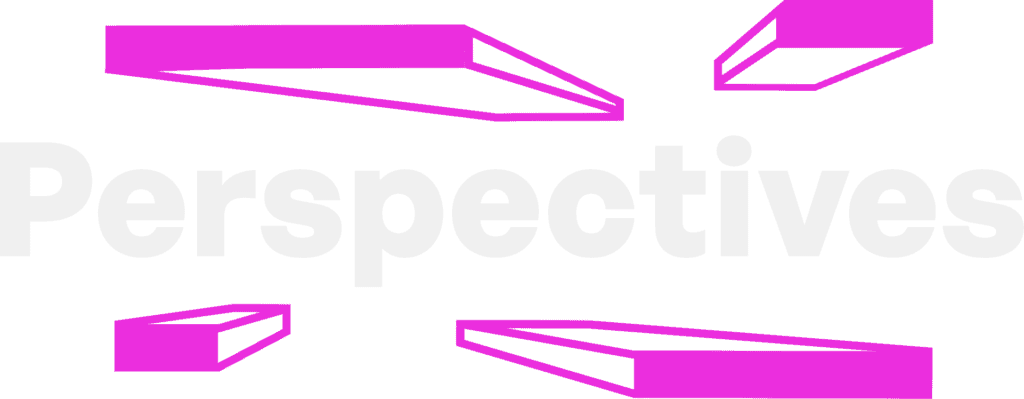While decommodified community-based models of collective care have declined through the neoliberal age, the “wellness” subculture, with a focus on commodified health regimens, self-care and self-regulation, has grown to fill the gaps. Promoting ideals of purity, self-care, and personal responsibility as the keys to good health, the “wellness industry” has capitalized on the weakening of community-based care, to produce a mass influx of brands and products for health-related consumption.
The industry reproduces these social relations through a growing subculture centered around what is broadly conceptualized as “wellness.” However, as wellness becomes increasingly intertwined with social media-induced cultural ideals of purity and hyper-individuality, alongside a backdrop of rising economic precarity, elements of wellness subculture have become susceptible to co-optation by alt-right social movements, who use these alternative health subcultures to espouse exclusionary and extremist ideologies.
Women, often bearing the brunt of a collapsing care economy, and targeted by image-centric marketing campaigns that focus on performative ideals of wellness, have been particularly impacted by the “wellness to alt-right pipeline.” Within a gendered context, alt-right movements have adopted and repurposed wellness concepts to advance their political agenda, intersecting concepts of health, purity, and consumption with their ideological norms. The wellness to alt-right pipeline continues to draw more and more who fall outside of the shrinking net of collective care into movements that threaten democratic institutions and community wellbeing.
How Did We Get Here?
A number of global and economic trends over the past decade, including government austerity in the care sectors of the economy, hyper-individualism, and corporate profit maximization, as well as episodic health crises such as the COVID-19 Pandemic that have upended care systems, are just some of the elements that have contributed to the increased output of the wellness to alt-right pipeline. Exploiting these widening inequalities are rising mistrust for institutions, the re-emergence of new age spiritual philosophies, and hyper-individualized subcultures that have replaced community identities. As wellness fills in the gaps left by care economy retrenchment, we experience a perfect storm for radicalization.
Government cuts and profiteering in care systems are largely responsible for leaving this vacuum that has become filled by the wellness subculture. The onus of care for children, elders, persons with disabilities, and those acutely ill has slowly become the responsibility of the individual, replacing the community collective. More often than not, the individual is a woman who undertakes unpaid care work with less and less community support. Amid this landscape of exhausting and individual self-reliance, the wellness industry has taken hold of a new conception of “self-care.” Despite its roots in Black activism, the concept of self-care has been deeply and disturbingly distorted. No longer a practice of perseverance in the face of exploitation, self-care as an extension of wellness subculture has evolved into a highly profitable consumer industry.
As women disproportionately take on the unpaid labour within the care economy, women too are disproportionately the market for self-care products. Small, inexpensive products promise to fill the gaps left by the gradual societal erosion of what was once a community-based care economy. As many women may exist in a state of overworked precarity and inequality over wages, with barriers to workplace seniority and unpaid care work, there are more than enough wellness and beauty products that can enable the illusion of a well-rested life. Self-care, even in its original cultural iteration, exists as a band-aid solution, and today’s self-care industry is a profitable one at that, promoting a veneer of glossy “wellness” to cover up the cracks of far deeper issues. All the while, care work, for the family or for the self, has become hyper-individualized to the point of exhaustion.
A similar practice of shifting the burden for care and wellness away from the collective, and towards the individual, has also evolved within the compensation workers are owed. As James J. Brittain writes in “Wellness and the Working-Class: The Artifice of Benefits under Capitalism” for Perspectives, the increasing focus on Wellness Spending Accounts (WSAs) by business elites is a superficial act where, “differing themselves from the disconnected bourgeoisie of a bygone era, the broadminded entrepreneur of today directly assembles, implements, and shapes a performance of support for each individual employee.” The individualization of wellness continues to seep into all aspects of health and care work, causing further erosion of institutions that previously served as providers of care, and safeguards against radicalization.
The erosion of collective and communal forms of care follows these trends of increasing distrust in institutions, be it the government, health care institutions like public health agencies, or other institutional safeguards like food and drug regulators. This distrust then further intertwines with a focus on self-oriented wellness. Sirin Kale in The Guardian writes that wellness has consistently been structured around, “three tenets: robust individualism, distrust of Western medicine and a commitment to self-optimization.” These components of wellness subculture stress individual self-optimization, over collective liberation and systemic reformation that could instead be beneficial for all.
At its worst, wellness subculture, and the elements that inform its believed pathway to a good life, serve as a fertile ground for the alt-right. In the way that the subculture cultivates a space for disillusionment and distrust of institutions, seeking solace in highly aestheticized forms of individualism, enables sentiments of nihilism that inform fascist ideologies.
The Aesthetics of Radicalization: Cleanliness, White Supremacy, and Visual Culture
Among the recent trends within the wellness subculture, fueled by an explosion over social media, is an attention to “purity” or “cleanliness.” Visually, the rise of the “clean girl” aesthetic, embodied traditionally by a thin, white woman, who can afford a high level of self-maintenance, demonstrates much of the visual aesthetic values of wellness subculture. Clear skin, requiring both external lotions and an internal diet, a toned body, achievable via yoga and Pilates, clean, healthy, slicked back hair, and whiteness, are visual aesthetic trends that are deeply interconnected to broader thematic elements of the wellness subculture.
This imagery is deeply appealing, offering simplicity in its conformity, and an appearance of both health and ample free time. The clean girl has her life together and looks good doing it. She is designed to be marketable, especially to harried women struggling with the messy truths of actual life. As aesthetic concepts of cleanliness and ideals of femininity collide, the ‘clean girl’ holds the promise of an easier, gentler, more beautiful life.
Within the world of wellness, cleanliness also exists in relation to food. While Harvard Medical School notes that “Clean eating has been a trend for the past decade, […] there’s no official definition of just what ‘clean eating’ means,” overall, this wellness trend is often thought of as avoidance of processed foods, and a hyper-focus on organic produce. While there may be some health benefits in theory, so-called clean eating ascribes moral values of “clean” and “unclean” when it comes to common foods, and this practice can rapidly devolve into an orthorexia eating disorder, or the unhealthy fixation on eating in a healthy way. The ideal of cleanliness as a path to the goal of wellness, of morality superimposed onto foods and visual markers, are just some of the facets of broader wellness subculture that are close to far more dangerous implications.
The intersections of cleanliness and morality, and the clear visual indicators and aesthetic values of ‘clean’ as a lifestyle, a state of being, evoke a clear historic lineage. As an example, the visuals of Olympia, the documentary by Nazi propaganda filmmaker Leni Riefenstahl of the 1938 Berlin Olympics, similarly uphold an aesthetic language of clean, stark, well-maintained physical forms; visuals marked by an undercurrent of rhetoric on the purity of whiteness. These visuals can be contrasted by the lack of cleanliness beholden by the “Other;” those who are conceptualized as less clean, less pure. Comparatively, the visual language of contemporary wellness subculture is not explicitly political, and yet, a digital landscape that idealizes and reveres the cleanliness of thin, able-bodied, white people lends itself well to the aesthetic ideals of alt-right ideology. However, in presenting this narrative as an undercurrent, an ‘aesthetic,’ versus presenting it as an explicit element, wellness subculture makes it so much easier to inadvertently become radicalized through this obscurity.
Many can find appealing a simple, visually beautiful, and ostensibly ‘clean’ lifestyle, without seeing the ugly worldview that lies underneath. The risks of inadvertently going down the alt-right pipeline are effectively masked by enough pretty pictures that radicalization through agreement with their underlying values may not feel like a reality until its already well underway. This is not to suggest that any individual influencers are actively seeking to uphold alt-right values or facilitate indoctrination via their physical presentation, but rather, to denote that aesthetics, and the language of wellness serve to communicate implicit values. Visuals and terminology do not exist in a vacuum, but instead are situated within a contemporary context – one that is steeped in histories of white supremacy. Even the seemingly benign trend of the clean girl should be considered within a broader media landscape. If this context is disregarded wholeheartedly, then the risk of insidious and implicit messaging within the wellness subculture could proliferate as more seek care while institutions around them are made to fail.
The physicality of wellness culture also includes a focus on self-optimization, high performance, and the creation of elite, athletic bodies. According to author Cynthia Miller-Idriss, bodies are “sites for regulation and discipline,” and also contribute to strengthening the radical right’s view of the world of “us versus them.” Physical health and superiority are linked, albeit often implicitly, via the performance of the wellness subculture. Physicality is further implicated in the performance of gender and femininity, and the value placed on very specific female bodies, against a feminism that’s seen as elite-driven, open, and non-traditional. At odds with itself, these ideals of femininity and athleticism come into direct conflict and create a cultural crisis: when an athletic, high-performing body is prioritized, concurrent with a focus on purity and superiority, those that do not fit the mold face pushback.
The wellness subculture conflicts with expectations on how to ‘correctly’ perform femininity. Imane Khelif, a gold medal boxer from Algeria, faced intensive transphobia over her physical appearance at the 2024 Olympics in Paris, despite being female. The transphobia she experienced came about right-wing influencers and their judgements of Khelif’s perceived masculinity, which created an outpouring of online harassment against the high-performing female athlete. Khelif did not meet the imposed purity standard, being an elite athlete and a woman of colour who did not present herself as hyper-feminine. The alt-right thus weaponized the debate over trans inclusion in women’s sports, and extended the debate to include any woman who does not fit broader standards around femininity. They used wellness-based rhetoric to argue for the exclusion of trans women on the basis of perceived physical advantages. This narrative is often framed within a broader agenda of preserving “biological purity” and protecting traditional gender roles.
Anti-vaxxers, Survivalists, and Institutional Distrust
Other branches of the wellness subculture further emphasize pseudo-scientific natural remedies, holistic health, and skepticism of conventional medicine, providing fertile ground for anti-vaccine rhetoric, which in turn intersect with elements of alt-right ideology. The alt-right regularly exploits vaccine skepticism, portraying government-mandated health measures as authoritarian overreach and part of a broader conspiracy to control the populace. The conspiratorial elements further intersect with the emphasis on “personal freedom,” shared by many that follow the wellness subculture as well as the alt-right. In the context of vaccination against COVID-19 or other viral illnesses that public health authorities recommend protection against, this rejection becomes an expression of opposition to governments and the perception that they are being subject to forced medical interventions for nefarious purposes.
The alt-right amplifies this by framing public health vaccination campaigns as government intrusion into personal lives and bodies, resonating with those whose ideologies prioritize “purity” and individual autonomy. Some wellness subculture figures have promoted the idea that vaccines are part of a “Big Pharma” conspiracy, meant to keep people sick and dependent on the medical-industrial complex. While correctly criticizing the profiteering and exploitation pharmaceutical companies commit in commodifying this aspect of community care, this narrative is coupled with the promotion of alternative commodified industries that produce detox diets, nutritional supplements, and other wellness products, presenting these other products as safer, more “natural” alternatives. This alignment of the wellness subculture with populist alt-right ideologies contributes to the erosion of trust in democratic institutions, including public health agencies who have to operate under the eroding pressures of neoliberal capitalism. In turn, this erosion is part of a broader strategy to destabilize societal norms and promote authoritarian alternatives.
The erosion of faith in public institutions comes full circle with the centrality of self-reliance to the wellness subculture. When crossed with alt-right ideology, the ethos of intensive individuality through self-improvement and self-reliance shirks traditional community-driven safety nets such as mutual aid, as well as broader faith in institutional reliability. In these ideologies, there is no trust in a democratically elected government’s ability to care for its citizens, or faith in democracy as a whole. Taken further, this coherence between subcultures and ideologies has led to a rise of often alt-right aligned survivalist communities, existing online and in the real world, that focus on self-reliance and wellness. Examples include the Health Freedom Movement, which spans various social media platforms, including Facebook, Instagram, and YouTube. This online community promotes the idea that individuals should have complete control over their real-world health choices, free from government or corporate interference. Followers are frequently found advocating for self-sufficient lifestyles that include stockpiling supplies, learning survival skills, and rejecting mainstream healthcare.
While survivalism exists at the extreme fringes of the wellness subculture, the influence of its visual aesthetic can make it attractive to those disenchanted by late-stage capitalist erosion of community and living standards. Finding alignment with the wellness subculture’s distrust and skepticism of vaccines, everyday nutrition, and governments, ordinary citizens are now finding themselves in agreement with the values of alt-right ideologies, as highly commodified Internet infrastructure funnels these industries into their social feeds devoid of current affairs and informed debate.
Restore Community Care to Fight the Alt-Right
The congruence of the wellness subculture with alt-right ideologies presents another culture war front opened by authoritarian tendencies, as well as a tangible threat to rights and democracy. As wellness practices and beliefs become increasingly entangled with extremist narratives, it is imperative that the wellness industry take deliberate action to address and counter these developments, and that governments stop the erosion of institutions of community care.
The wellness industry influences millions of people through products, practices, and narratives. This influence comes with a responsibility to ensure that the messages being promoted do not inadvertently support harmful ideologies. The industry must move beyond a purely consumer-driven model that prioritizes profit over ethics, and embrace a more socially responsible approach if it is to fill the gap left by retrenchment and austerity. Beyond the wellness industry, there is a broader social responsibility to address the connection between wellness culture and extremist ideologies. Governments, public health agencies, educational institutions, and media organizations all have a role to play in promoting critical thinking, debunking misinformation, and fostering a public discourse that upholds democratic values. At the smaller scale, civil society efforts to reinvigorate mutual aid and provisions of care at the community level can similarly counter radicalizing elements. Overall, if governments are to protect democracy, they must restore collective health and wellness institutions to again effectively care for citizens, and remove the hyper-individualization of care that has grown over recent decades.





